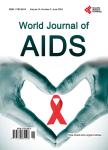Topological and Historical Considerations for Infectious Disease Transmission among Injecting Drug Users in Bushwick, Brooklyn (USA)
Topological and Historical Considerations for Infectious Disease Transmission among Injecting Drug Users in Bushwick, Brooklyn (USA)作者机构:National Development Research Institute New York USA. Social Networks Research Group John Jay College CUNY New York USA
出 版 物:《World Journal of AIDS》 (艾滋病(英文))
年 卷 期:2013年第3卷第1期
页 面:1-9页
主 题:Social Network Analysis Injecting Drug Users Scale-Free Networks
摘 要:Recent interest by physicists in social networks and disease transmission factors has prompted debate over the topology of degree distributions in sexual networks. Social network researchers have been critical of “scale-free Barabasi-Albert approaches, and largely rejected the preferential attachment, “rich-get-richer assumptions that underlie that model. Instead, research on sexual networks has pointed to the importance of homophily and local sexual norms in dictating degree distributions, and thus disease transmission thresholds. Injecting Drug User (IDU) network topologies may differ from the emerging models of sexual networks, however. Degree distribution analysis of a Brooklyn, NY, IDU network indicates a different topology than the spanning tree configurations discussed for sexual networks, instead featuring comparatively short cycles and high concurrency. Our findings suggest that IDU networks do in some ways conform to a “scale-free topology, and thus may represent “reservoirs of potential infection despite seemingly low transmission thresholds.



